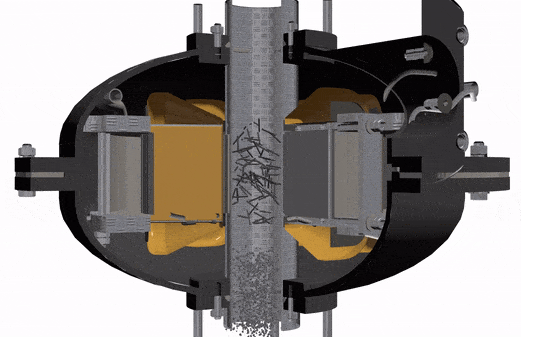Wastewater Treatment Technology
Published on by Vitaliy Kolesnik, GlobeCore GMBH in Technology
Development of wasteless technology is an important measure to protect the environment from anthropogenic loads by separating contaminants from water, and possibly to recycle the contaminants for use in technology processes.
 This can be achieved by using modern efficient technologies. However, wastewater has several types of contaminants and so using only technology process in real conditions might be economically problematic or too cumbersome.
This can be achieved by using modern efficient technologies. However, wastewater has several types of contaminants and so using only technology process in real conditions might be economically problematic or too cumbersome.
Wastewater is most often processed using traditional treatment methods. However, if wastewater contains several organic substances, similar in physical and chemical properties, the technology process becomes complicated.
The amount of wastewater, including that containing hazardous organic materials, grows every year. To prevent further increase of wastewater amount in the industry, a promising approach is to develop wasteless technology processes and implementation of closed loop water supply systems. That is why comprehensive purification processes are being developed. Also, new methods of chemical removal, such as iron, fluoride, manganese, pesticides and other chemicals, petroleum products etc.
Hexane is used in many industries. For instance, hexane solvent is widely used in vegetable oil extraction. Such solvents as benzol, toluene, ethyl acetate, isopropanol and cyclopentane.
Reduction of organic substances in wastewater can be achieved by local purification. The processes involved adsorption, reverse osmosis, ultra-fitration, electrodialysis and ion exchange. Oxidation by atmospheric oxygen and ozone allows to remove up to 99% and 75% mercaptans. Resinous materials are removed by filtration through activated charcoal or coke.
Activated charcoal can easily adsorb acrylonitrile, aniline, benzene, chlorobenzene, cyclohexane, cresol, mercaptan, naphthalene and phenol. These substances can be extracted from activated charcoal by chloroform, ethanol, acetone, while reverse osmosis removes up to 90% of organic substances from wastewater.
In sulfate cellulose factories, the local purification methods include purification of wastewater with chlorine, lime, ozone and oxygen, which oxidize hydrogen sulfide and hydrosulfide. To oxidize organic substances in wastewater and for disinfection, chlorine is used, to remove odor, apart from ozone and chlorine, hypochlorite and manganese dioxide are used; unpleasant smell of sediment is neutralized at 730ºС.
As a rule, organic substances in wastewater are biologically oxidized in local or factory facilities. However, many are resistant to biological oxidation, and in such cases, thermal decontamination (incineration) is often used. Organic wastewater materials are incinerated at 800-1000ºС. Incineration is often used for such substances as benzol, toluene, resins, aldehydes and paraffins.
Using natural sorbents is treatment does not require their regeneration, while contaminated sorbents may be used in other chemical, construction or agricultural processes. Therefore adsorption is a promising and relatively inexpensive method of wastewater purification.
Chromatographic processes, especially adsorption, are often used in chemical and pharmaceutical industries, in biotechnology for breaking chemical and physical bonds. Many types of adsorbents with various structure and chemistry found use in adsorptive chromatography.
Attached link
https://avs.globecore.com/wastewater-treatment-technology.htmlMedia
Taxonomy
- Solid Waste Treatment
- Pharmaceuticals Waste
- Waste Water Treatments
- Waste to Value
- Waste Water Reclaimation
- Waste, wastewater, air, chemical engineering
- Waste Water Treatment